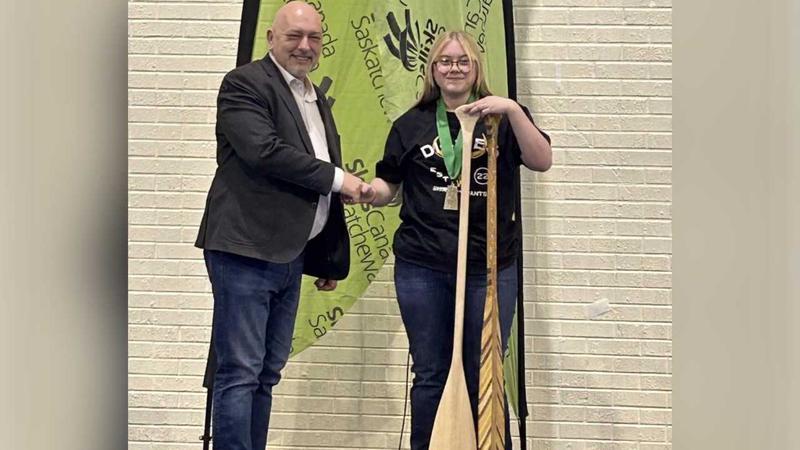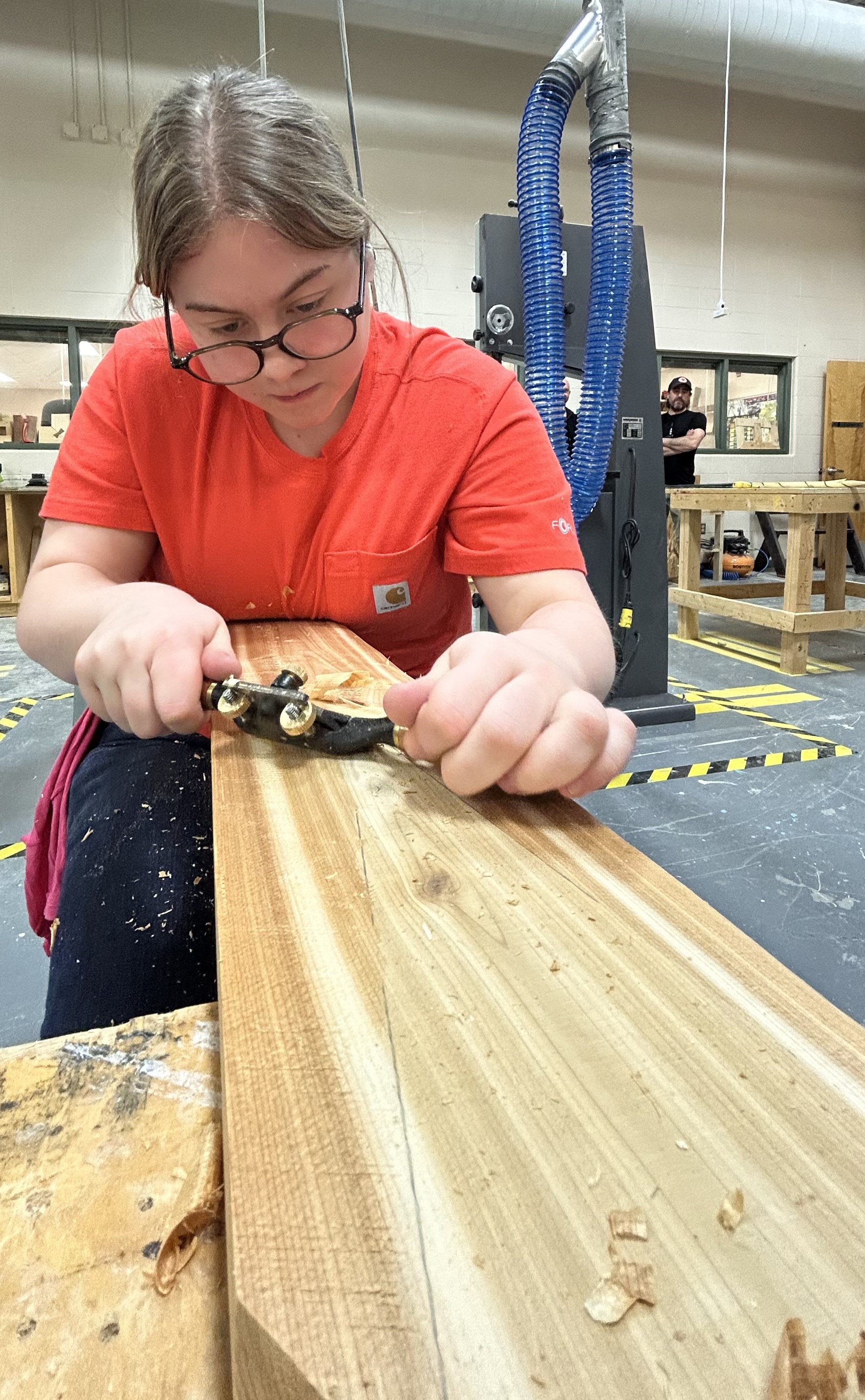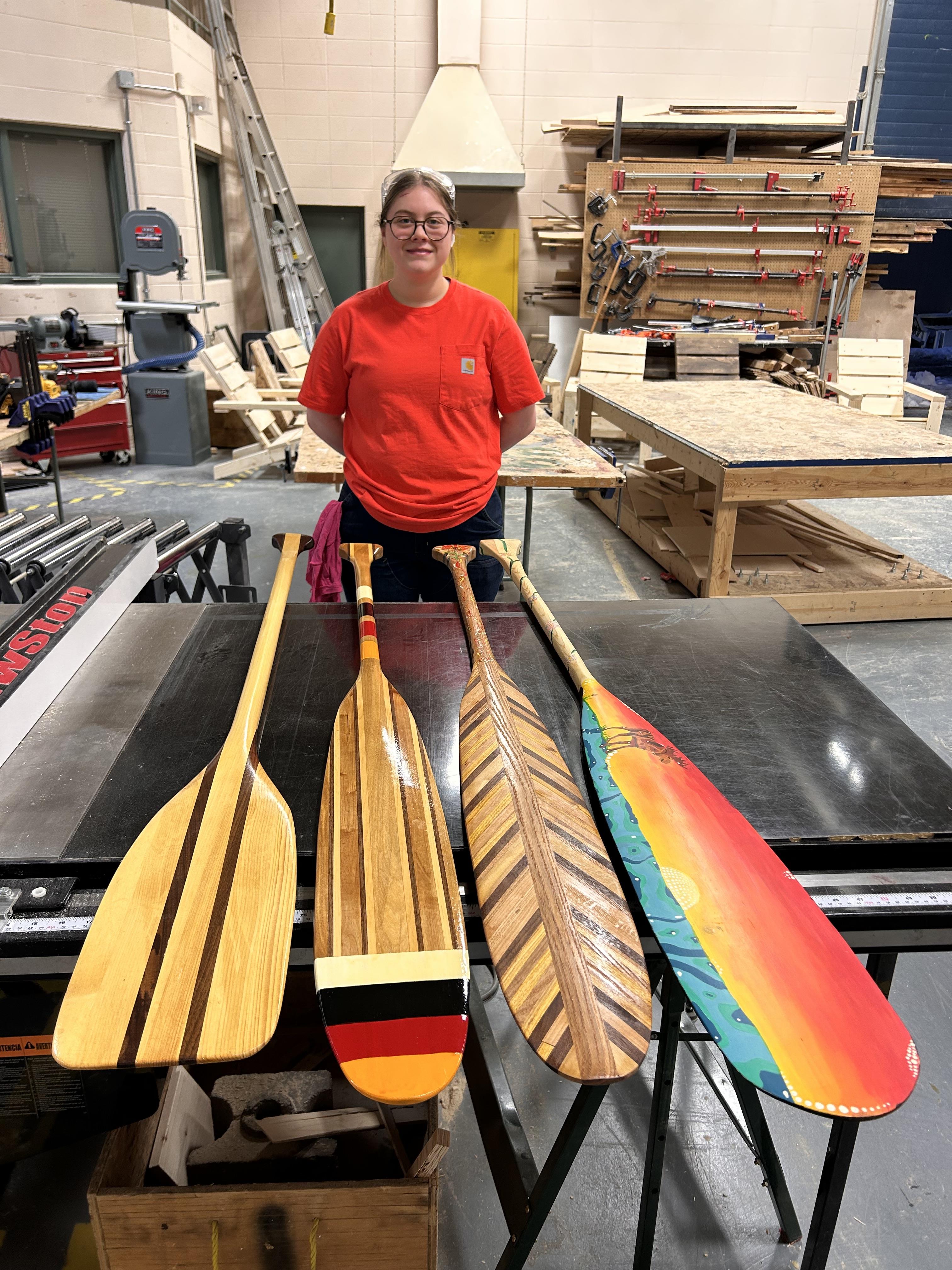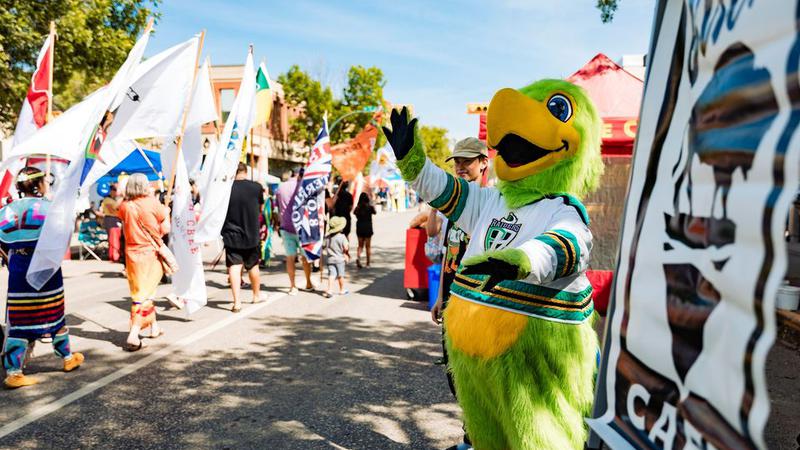
La Loche teen wins gold in Indigenous paddle making at Skills Canada competition
Claire Haynes remembers the first and only time she dipped a paddle made of her own hands into the water.
“We were out on (Lac La Loche) and I couldn’t wipe the smile off my face,” she said of her experience as a first year high school student.
“I was so proud of myself, and I felt so accomplished.”
At the time, Haynes was recovering from a wrestling injury and was struggling psychologically.




